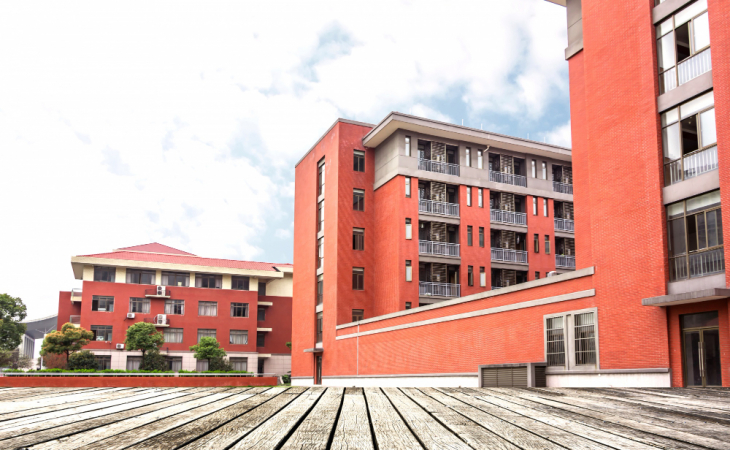School Design: Building Bridges to Academic Excellence
Share

However, one aspect that is often overlooked but has a profound impact on learning is school design. The physical environment in which students learn plays a crucial role in their overall educational experience.
Creating inspiring educational spaces with School Design
A well-designed school provides a conducive atmosphere that fosters curiosity, creativity, and collaboration. It goes beyond the mere arrangement of desks and chairs; it encompasses everything from the layout of classrooms to the choice of colors, lighting, and even the incorporation of nature. A thoughtfully designed school can inspire and motivate students, making them eager to learn and explore.
An inspiring learning environment starts with the architecture and layout of the school. The design should be functional and flexible, allowing for easy movement and interaction between students and teachers. Open spaces, such as common areas and atriums, can encourage socialization and collaboration. Additionally, the careful placement of windows and natural light can create a sense of openness and connection to the outside world, promoting a positive learning environment.
The Impact of School Design on Education
Research has shown that school design has a significant impact on student performance and well-being. A well-designed school can improve academic achievement, reduce behavioral issues, and enhance overall student satisfaction. Studies have found that students in well-designed schools have higher test scores, better attendance rates, and improved concentration levels compared to those in poorly designed schools.
One of the key factors that contribute to the impact of school design is the use of color. Colors can evoke different emotions and have a psychological effect on students. For example, warm colors like yellow and orange can promote creativity and stimulate the mind, while cool colors like blue and green can create a calming and focused atmosphere. Careful consideration should be given to the choice of colors in classrooms and common areas to create a balanced and stimulating environment.
Another important aspect of school design is the incorporation of nature. Research has shown that exposure to nature has numerous benefits for cognitive function and mental well-being. Schools that have green spaces, gardens, or even indoor plants can create a calming and rejuvenating environment for students. Nature-inspired elements such as natural materials, textures, and patterns can also enhance the overall aesthetics and create a sense of connection to the natural world.
Principles of Thoughtful School Design
Thoughtful design courses in Delhi is based on a set of principles that aim to create an optimal learning environment for students. These principles include:
- 1. Flexibility and Adaptability: Schools should be designed to accommodate different learning styles and teaching methods. The layout and furniture should be flexible, allowing for easy reconfiguration to support various activities and group sizes.
- 2. Accessibility and Inclusivity: Schools should be accessible to all students, regardless of their physical abilities. Design considerations should be made to ensure that students with disabilities can navigate the school independently and participate fully in all activities.
- 3. Sustainability and Environmental Responsibility: Schools should be designed with sustainability in mind. This includes incorporating energy-efficient systems, using eco-friendly materials, and minimizing waste generation. Teaching students about environmental responsibility through the design of their school can also instill important values and promote a sustainable mindset.
- 4. Technology Integration: Schools should embrace technology and design spaces that support its integration into the learning environment. This includes providing adequate infrastructure, such as Wi-Fi access and charging stations, as well as flexible spaces for collaborative digital projects.
The Future of School Design
As we look to the future, school design will continue to evolve in response to changing educational needs and advancements in technology. The traditional classroom setup may no longer be the norm, as schools experiment with innovative designs that promote active learning and personalized instruction.
Virtual reality (VR) and augmented reality (AR) are expected to play a significant role in the future of school design. These technologies have the potential to transform the way students learn by creating immersive and interactive experiences. Virtual classrooms, where students can explore different environments and historical eras, can bring learning to life and make it more engaging.
Additionally, the use of sustainable and eco-friendly materials will become increasingly important. Schools will aim to be carbon-neutral and incorporate renewable energy sources into their design. Green spaces and gardens will continue to be valued for their positive impact on student well-being and environmental education.
Conclusion
School design has a profound impact on education. A well-designed school provides an inspiring learning environment that fosters creativity, collaboration, and academic success. Thoughtful school Kolkata design considers factors such as architecture, color, nature, and technology integration to create an optimal learning environment for students.
As we move forward, the future of school design holds exciting possibilities. Virtual reality and augmented reality will revolutionize the way students learn, while sustainable and eco-friendly design practices will become the norm. By investing in thoughtful school design, we can empower the next generation of learners and create inspiring educational spaces that nurture their potential.

